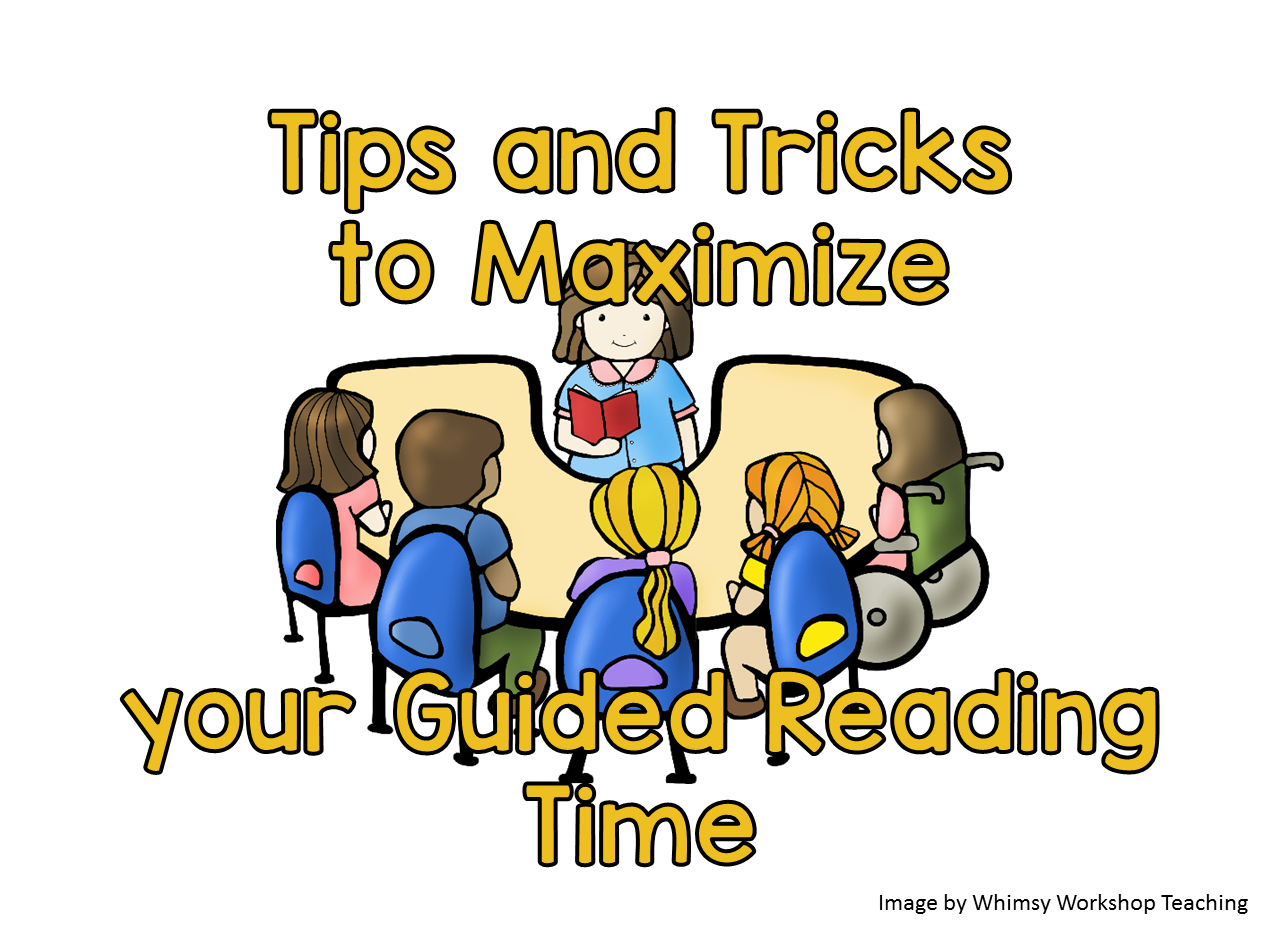
Guided reading time is so precious!
Don’t you agree? As a classroom teacher, it was one of the few times I got to observe my students up close. Even as a reading specialist I was hyper protective of my guided reading sessions. (Just ask the classroom teachers I worked with…I probably drove them crazy! Ha-ha!)
During my years of teaching guided reading, I’ve come up with a number of techniques and materials to make the best of that special instructional time. I’ll share a few of those with you.
Focus on text reading during guided reading.
Many educators—and even researchers—have a mistaken notion of what guided reading is. Honestly, I see many so-called “guided reading” products for sale that have little to do with guided reading.
The point of guided reading is to help children become better readers of text. Guided reading activities usually include:
- Rereading familiar texts and yesterday’s new text
- Introduction of a new text to a small, homogeneous group of readers
- Having the students read the new text with scaffolding by the teacher
- Teaching strategies that the students will be able to apply to reading all texts (as opposed to simply solving problems that are in one text)
All other activities often included in guided reading sessions are optional.
What about word work? Shouldn’t we include phonics and sight word activities in our guided reading sessions? Yes—I usually do—but I try to make sure that the word work is in the service of reading the text, not the focus of the lesson. And, as a classroom teacher, you want to make sure that there isn’t a more efficient way to teach those skills, such as to the whole class or another small group.
The free pdf chart below is helpful for reflecting on the most practical and efficient setting in which to address each of your curricular objectives.
Stay organized.
I’m not th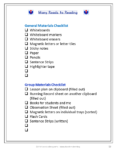 e most organized person in the world, so it’s crucial for me to keep all my reading materials in once place. Every minute I take to look for materials during a guided reading session takes away from precious observation and teaching time. I also make sure that all my forms are completely filled out before the lesson. Naturally the materials you include depend on the reading level of your students.
e most organized person in the world, so it’s crucial for me to keep all my reading materials in once place. Every minute I take to look for materials during a guided reading session takes away from precious observation and teaching time. I also make sure that all my forms are completely filled out before the lesson. Naturally the materials you include depend on the reading level of your students.
I make two checklists: one for each group basket, and one for the generic materials.
Then I try to always leave my materials in the same place! (Too bad I don’t do that at home!)
Group flexibly based on frequent assessments.
Another way to maximize your guided reading time is to make sure that your students are properly grouped. Students who are bored or frustrated won’t be getting the most they can out of guided reading.
Successful grouping depends on frequent observation and assessment. I’m sure you already give running records to your students on a regular basis.
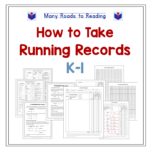 But even when you are not giving running records, try to keep a close eye on all your readers, and don’t wait until after the session to jot down what you have noticed. (If you’r
But even when you are not giving running records, try to keep a close eye on all your readers, and don’t wait until after the session to jot down what you have noticed. (If you’r e like me, you’ll forget!)
e like me, you’ll forget!)
In order to take abbreviated notes about students in real time, I devised a method for coding observations during the lesson: the Guided Reading Quick Notes FREEBIE.
Schedule carefully, creating other small groups as needed.
You can apply several principles as you schedule your groups:
- Meet more frequently with lower groups than higher groups.
- Don’t try to meet with every group every day (except for your lowest group).
- Your highest group may not need guided reading at all, since they are more independent.
- Schedule your lower groups for longer sessions.
Som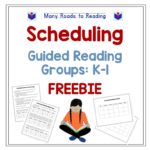 etimes a few students in different groups are struggling with a skill or strategy, while most of the students in their groups are not. I find this skill is often related to phonemic awareness or phonetic decoding. Don’t waste time teaching something during guided reading that most of the students in the group have already mastered. Set up a separate group for that.
etimes a few students in different groups are struggling with a skill or strategy, while most of the students in their groups are not. I find this skill is often related to phonemic awareness or phonetic decoding. Don’t waste time teaching something during guided reading that most of the students in the group have already mastered. Set up a separate group for that.
Choose profitable activities for the rest of the class.
Another way to maximize your guided reading time is to make sure that the rest of the class is engrossed in what they are doing. You want not only to be able to focus on your guided reading group without interruption, but also to know that the other students are getting the most out of their learning time.
For this reason, I’ve never been a big fan of centers—too much waiting time. Instead, I try to have the other students fully engaged in reading and writing. My activity board is simple.
- I always take my lowest groups first.
- When possible, I have a group follow up their guided reading session by rereading or finished the book I just gave them in guided reading, perhaps with a partner.
- Other activities during the reading block include work work, writing, vocabulary development, listening, solo reading, and computer. When possible, I try to choose activities that correspond to the strategies or words I am teaching in guided reading.
Teach routines well.
Teaching routines is vital, both for saving time, and for making sure that the students are getting the most out of their guided reading time.
One of the first routines I teach is to have the students get started reading books from their book boxes even before I get to the group. After I introduce this routine, I pretend that I am busy talking to someone outside the classroom so the students ca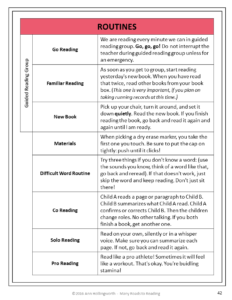 n practice. The kids love this challenge. The next day I pretend I am busy again after calling the group over. Role play your routines over and over, and revisit from time to time.
n practice. The kids love this challenge. The next day I pretend I am busy again after calling the group over. Role play your routines over and over, and revisit from time to time.
Other routines that help with smooth operation of the group include reading the new book, returning books to you, taking books home in bags, transitioning to next activity. Set up routines for the rest of the class, too.
Plan your guided reading lessons in detail.
Key to planning your guided reading lessons is a suitable lesson plan form. I created a form that covers the areas I may want to teach, provides space for notes about the students, and allows me to jot down skills that need to be addressed next.
I’m considering modifying this lesson plan for different stages of reading development. Leave me a comment below this post, if you would find that useful. (In fact, I would love it if you leave a comment about any materials you are looking for!)
Adjust your teaching to the level of the guided reading group.
It’s easy for us all to fall into a rut when teaching guided reading, so we need to remind ourselves to tailor our teaching to the needs of each group. Your guided reading lesson with a group of emergent readers should look very different from your lesson with more developed readers.
In the resource at the end of this post, I chart the book characteristics, challenges, strategy focus, word work, comprehension, and appropriate teaching/prompting for each of 6 stages of reading development: Early Emergent, Emergent, Developing, Transitional, and Self-Extending.
I sincerely hope that these suggestions help you maximize your guided reading time!
Happy teaching!
[This resource includes 10 tips and 15 printables to help you make the best of your guided reading time. I have included 5 of those 15 printables as freebies in this post.]
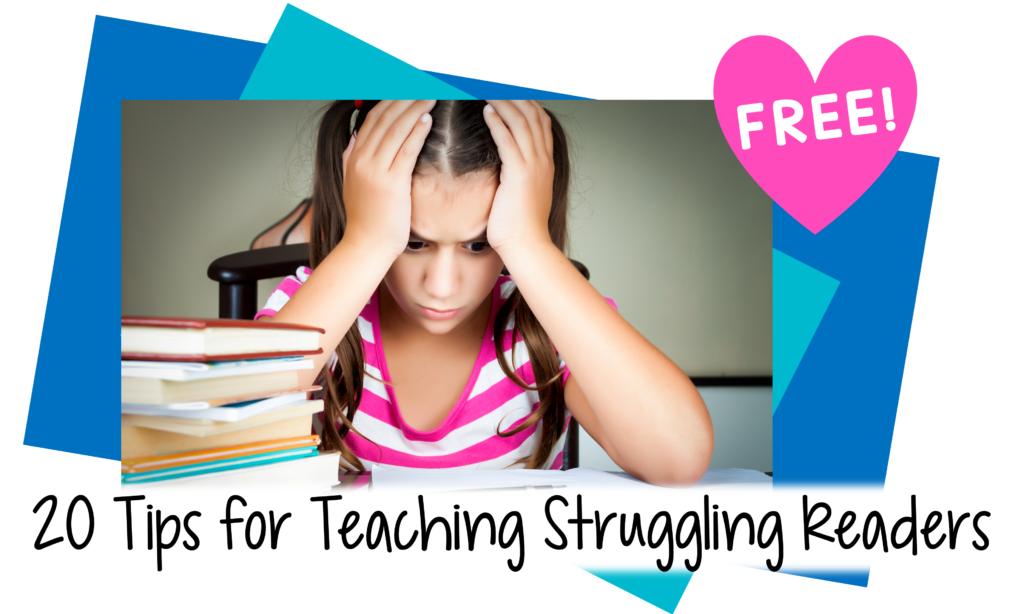
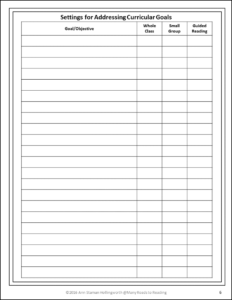




Leave a Reply